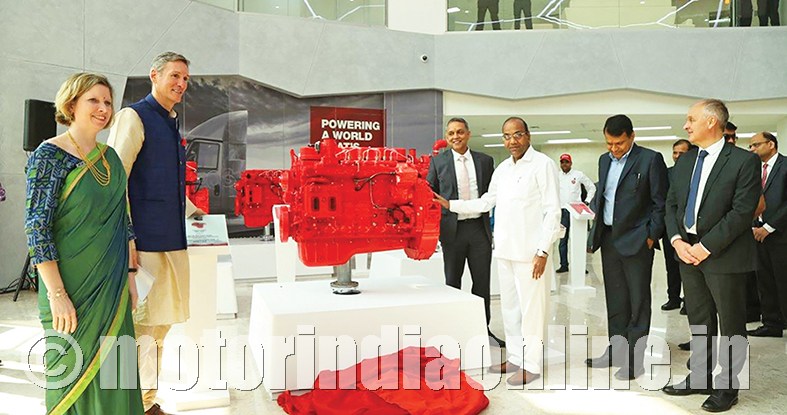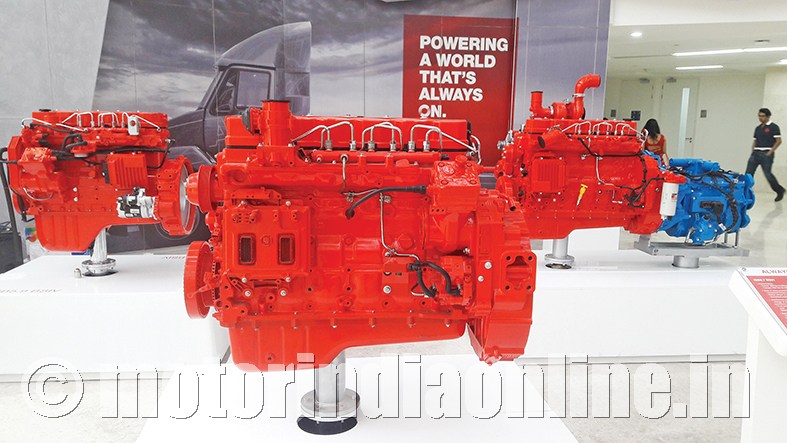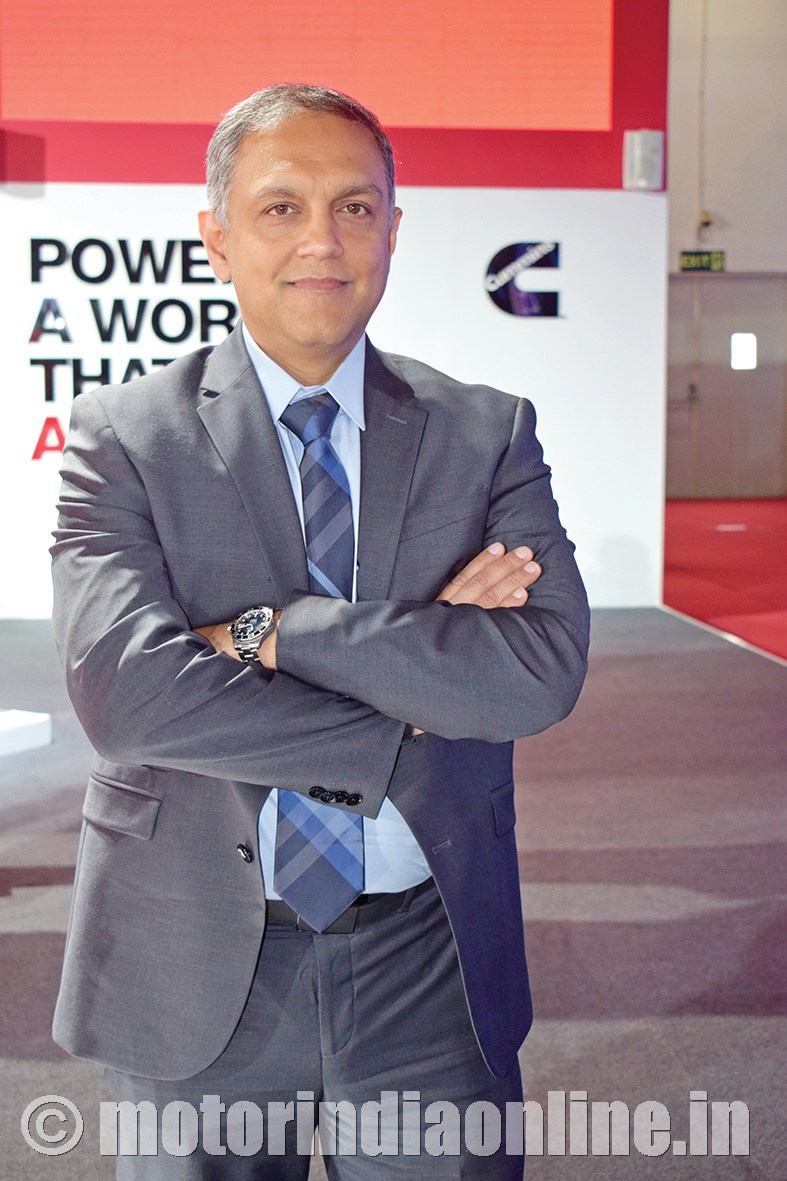Displays capability as fully-integrated powertrain solution provider
Cummins Inc., a global power leader in designing, manufacturing, distributing and servicing a broad portfolio of power solutions ranging from diesel and natural gas engines to hybrid and electric platforms, as well as technologies, including battery systems, fuel systems, controls, etc., has opened a new state-of-the-art technical center at its Kothrud campus in Pune. Known as the Cummins Technical Center India, it is equipped with world-class laboratories, engine test cells and engineering facilities.

Speaking on the occasion, Mr. Tom Linebarger, Cummins Inc. Chairman and CEO, said: “We see real opportunities for continued growth in India. The investments we made here decades ago also help us weather the cyclical nature of our industry, and we expect continued growth here as well as the more stringent emission norms – the move to BS-VI – present significant opportunities for Cummins to provide our customers with technologies that will help them succeed in their businesses.”
The new technical center will be an integral part of Cummins’ global technical network that serves the needs of all businesses across the world. Mr. Sandeep Sinha, Managing Director, Cummins India, said: “Apart from providing the physical asset required to support every global business product line, this technical center will bring us closer to our mission of developing a sustainable technical talent pool that delivers our brand promise of innovation and dependability.”
Ultra-modern Infrastructure
The four-storey building is impressive with seating capacity for 2,500 professional engineering staff. The new office features collaborative workspace that will support diverse work styles, preferences and backgrounds for all employees. It will promote employee well-being through the use of light, art and design and productivity through amenities and technology. The office space includes a flexible learning center to support education, training and team building.
The facility houses 36 engine test cell slots, two turbocharger rigs, one emissions burner test rig, eight product line specific labs and nine shared services labs. These are the physical assets required to support every global business and product line the company produces.
“We are focused on capable infrastructure, capable people and delivering our brand promise of innovation and dependability. We have been and continue to be committed to growing our engineering capability in India,” explained Mark Firth, Executive Director – India Engineering.
The Cummins Technical Center India is an integral part of Cummins’ global technical network that has been developed to serve the needs of all businesses globally. The Technical Center is aligned to the company’s five principles of sustainability, of being Safe, Green, Clean, Lean and Diverse. With a building floor space of 67,500 sqm., the technical center aims to develop sustainable technical talent pool to deliver the Brand promise of ‘Innovation and Dependability’ and provide the physical assets required to support every global business and product line.
“Our global expertise, domestic SCR experience will make a significant difference”
Interview with Sandeep Sinha, Managing Director, Cummins India
What has Cummins been doing to address the BS-IV engine demand for the Indian market? How ready are you for BS-VI?
We have had an amazing run since the BS-IV introduction with almost 1,00,000 engines in the market. Gradually, each month, we are pumping in almost 16,000 engines, which, in fact, makes us the most dominant BS-IV engine provider in the market. By the time the BS-IV era ends we will have 4-5 lakh engines with our SCR technology, in addition to 50,000 to 1,00,000 EGR engines in the market. We give the power of choice to the customer based on their application.
While we move to BS-VI we would have crossed at least 5,000 crore km on BS-IV SCR. I don’t believe anyone else would have done so much, and that will prove to be our unique competitive advantage as we enter the BS-VI era. We would have understood the changing duty cycles, all in the Indian context, as the asset utilization is going up for various reasons. India is slowly and steadily moving towards the developed market where we have significant experience with higher duty cycles and high-speed vehicles.
In BS-IV, when we launched the engines we had done around 25 lakh km of field trials. In BS-VI, we will do 40 lakh km prior to the launch. We also do testing in the test cells. So, while in BS-IV we did around 12,000 hours in test cells, which is a lot, we will do around 18,000 hours for BS-VI. This is also keeping in mind that by 2020 when we will launch the engines, we would have at least 10-12 lakh vehicles running all over the world. Our global expertise and domestic SCR experience are going to make a significant difference compared to any other player in the market.
Would you also be able to give us a perspective on your clients and their demands across on-highway and off-highway applications?
As you are aware we are an independent diesel engine manufacturer and powertrain integrator. For us, obviously the partnerships with OEMs are important. As the technology advances, the development cost increases, which is where Cummins commands advantage as we are able to spread the cost across high volumes. Second is our knowledge of also application engineering. Every OEM has a different configuration and we have a lot of strength even in that area having worked with different OEMs globally as well as in India. We believe we bring our capability to optimize the performance of a truck or a bus. We are in touch will all major OEMs and are working with most of them, and we will continue to grow our share of business with the existing OEMs as well.
Most of the OEMs also have their own engine manufacturing capability and capacity. At what stage would Cummins be amalgamating with the OEMs and in which particular area of engine development or integration do you participate?
At least on the ‘on-highway’ side most of the OEMs have their own engine business, but they also depend on Cummins across the world. We have always had this situation, but they also participate with us. It makes us better as we have proven across the world that we have always brought new innovation and technology irrespective of OEMs having their own engine business – be it in the US, China and even in India. We participate with them with our components business, whether it is turbocharger or after-treatment, filtration products and fuel systems. I think we are doing well and will continue to provide our expertise at all levels.
How is Cummins preparing for e-vehicles?
We have an electric powertrain and will effectively be the first to introduce a fully-electric commercial vehicle in the world. We feel very proud about it and have made significant investments already in battery-pack technology and acquired two companies over the last couple of years with plans to invest $500 million over the next three years. There is also a lot to be done on the infrastructure level for electric vehicles to be successful. There are other questions before us, like the availability of lithium. While we as an industry understand the eagerness to go electric, there is a lot to be done. There is still a lot of innovation left in the Internal Combustion Engine (ICE).
Even after BS-VI there will be new standards of fuel economy that will come in and hence a lot of innovation, like the hybrids, the range extenders-which will have an ICE along with a battery pack. Hence, the future looks equally promising for us. While diesel and natural gas will continue to be important in many markets for years to come and we will continue to drive innovations for our customers, we are rapidly evolving from an engine provider to a fully integrated powertrain solution provider.
Given the wide range, is it difficult to judge or prepare and work on a particular technology, when there are huge investments made? How does Cummins prioritize?
Our being independent gives us a huge advantage. We have multiple OEMs with whom we are speaking about electrification and not dependent on any one particular OEM. We are able to spread our development cost over high volume, as I mentioned earlier. We believe in the power of choice.
What about exclusivity between you and an OEM then?
We have that for a certain application in the development but not on any platform. For instance, the 6 litre engine that we have is our franchise engine. We sell over a million engines a year, and in every part of the world this engine is sold. From China to India to Europe, North America, Russia but with different partnerships. We have partnerships with Kamaz in Russia, with Tata here in India, DCEC in China and Crysler in North America. We may have certain development specifics to their application that can be exclusive, but as a platform we do not have exclusivity.
What is the level of localization at your Indian manufacturing plants and how about your exports?
Our products are almost fully localized. We have been instrumental in developing the supply base in India and will continue to do so as we bring new technology and stabilize it. We export almost 30 per cent from India in different applications.

